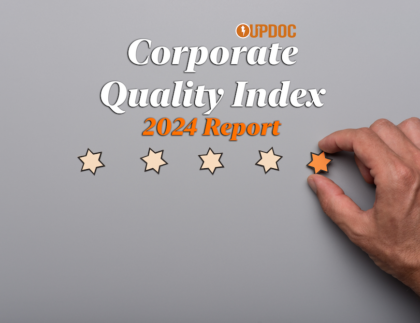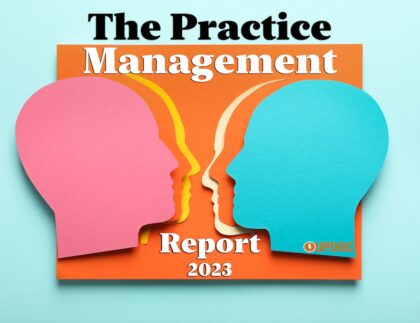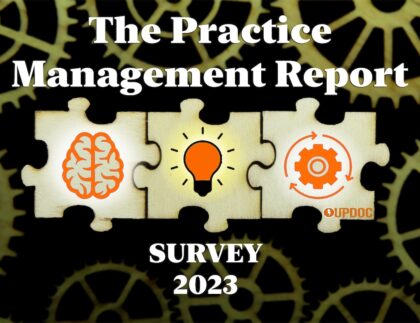
Welcome to the final installment of our Summer 2021 Back to Basic series. Soon after today’s release, we’ll be unveiling the Summer 2021 UpDate to the Job Market Pulse and Corporate Quality Index Reports. Definitely stay tuned!
Today, we’re looping everything together. We opened the series to cover what is and isn’t working for Marketing in the 2020s; we also made a strong reference for the need to market for talent. Next, we moved onto the topic of Talent Retention — after all, it’s keeping the right talent at the right time which helps organizations grow the strength of their talent pool and overall workforce. We then worked backwards into Hiring 101 and the necessary steps to ensure you are getting the right new hire while sifting through those that better fit elsewhere.

And, so… this post covers negotiations in four specific areas:
- As an employee (prospective or otherwise) to an employer.
- As an employer to a prospective job candidate.
- As an employer for talent retention.
- As an employer toward payers.
Before we get any further, it’s perhaps of the utmost importance to the topic in appreciating the fact that negotiations are inherently an exercise in conflict resolution. Two or more parties want different things; are motivated by different factors; have various value statements (some in common, some unique) that they will be leveraging; and, that ultimately negotiations can end in agreement, departure, or delay.
Negotiating Toward An Employer
In the perspective of talent, it’s important to recognize that the job market is in fact a marketplace. Just like any marketplace, the product quality and prices will vary. It’s important to discern good from bad offers; to identify when it’s time to walk away; to sense when it’s time to seal the deal; and, to appreciate many times, patience will pay off when with the right organization.

Strikingly, the nuance between getting a new job or getting a new situation at a current job are largely the same with one important difference: Incumbent employees have a stronger position than applicants — it far more expensive in opportunity costs to an employer to have a current employee turnover due to a failed negotiation than it is to move onto the next candidate in queue.
Therefore, consider these while observing the common fundamentals between the two. Before you negotiate:
- Have a strong sense of the job market you are in. You can find salary norms via the Job Market Pulse.
- Understand both the career life cycle of the workforce you are a part of (or, applying to) and how you fit into the scheme. After all, if you are applying to a department where most clinicians are on the eve of retirement, then the leverage remains with you as the applicant/incumbent.
- For applicants, use calibrated questions to clarify your position and the position of the hiring organization.
- Be sure you have a clear value proposition to negotiate from. You can use these three key steps in developing your own.
- Consider the ecosystem effect of being retained as talent or becoming acquired as new talent — address points of interest that create positive gains for the employer organization.
As noted in the 2021 Talent Acquisition Report, there is a growing segment of the workforce most interested in solid benefits and an agile work schedule that is more compatible with working parents, than has historically been available. It would be advantageous to both workforce and employer organizations to find inroads here rather than the traditional battleground of cash driven negotiations.
Ultimately, it’s important to realize that being an employer and sitting from the position of the (hiring) manager is stressful enough as it is. It’s not like clinical healthcare companies are swimming in gold.

Gauge your counteroffers or initial blitz offers to something data driven, as to not insult your prospective or current employer — begin your moves with confidence, portraying that how you do now comes with the same gusto you shall perform on behalf of the company.

Above all: Be Respectful.
The difference is found between conveying your offers as something you deserve (aka rejected!) vs. something you have earned (ie. raise accepted!) or new value you can bring (hired!).
PS. I’ll say it now just as we’re about to cover it in the next section — When it comes to the actual active negotiating, the traditions and unspoken rules of old no longer apply. The classical concerns such as: “Who speaks first?” and “When do I counter?” or “Should I name a number or a range?” — all of these are secondary concerns in the contemporary game of negotiations.
PPS. Due to the anchoring effect, the contemporary recommendation is to go ahead and speak first, especially if you are sitting from the position of a candidate; it’s a lot harder to move up from a lower number than to move down from a higher number. It’s also far easier to propose a novel working arrangement that covers employer interests than it is to redirect a standard working arrangement into something rather undiscovered.
Negotiating for the “New”
For most hiring managers, it is felt that the employer organization stands in a place of authority. “We make the offers.” has been a faulted and failed mantra, particularly for organizations that are trying to retain talent — but, that’s for the next section 🙂

Here, let’s discuss some of the modern realities of multi-channel negotiations along with some novel approaches to protecting company finances while improving departmental composition.
In regards to multi-channel communications, it will be likely that the majority of workforce candidates will convey their offers and counteroffers via an undetermined combination of emails, text messages, another messaging platforms — just as much as they may do so over the phone, in person, or across a synchronous video call. Therefore, be ready to counteroffer on one channel, back to receive a response on another… and, continue such craziness until negotiations have concluded. Naturally…a hiring manager can corral candidates into a singular channel; this has to be done behaviorally (such as replying only via email) as much as it can be done instructively.
Something to consider as an employer organization is to utilize the negotiations process for new hires as part of the process in determining proper fit to hire. This is something we discussed at length in our Hiring 101 installment.
Consider also that how a candidate negotiates in such circumstances will likely reflect in how they stand up for the company, as much as in how they will likely advocate for their patient-customers.
If a candidate rolls over dead because they hit the first point of resistance during negotiations, one might place a bit of doubt on their ability and willingness to adhere to the company's values.

In the same vein, employers who are unwilling to negotiate or at the very least willing to have a dialogue on why they can’t or cannot have wiggle room — all this tells the candidate that culture at the organization does not embrace transparency, does not embrace ownership mindset, and very likely will harbor mediocrity and reward those who stay down, stay quiet, and do just enough to keep their jobs.
CAVEAT: For those organizations who have strict compensation models, this is where that conversation is critical — to explain to the candidate during the negotiations process how and why your hands are tied as the hiring manager; it is also during such a dialogue you might have an opportunity to negotiate across other dimensions of compensation. To this, you can explore this post on other dimensions of pay people tend to forget about.
Important Industry Insight to Consider
All too often, there is a disservice done to “the new grad population” where they are seen as “new at the real world.” Considered often as “cute” or “inexperienced,” the contemporary job market is filled with 2nd or 3rd career pursuits in healthcare much seasoned in life, as often as they are by 1st time stereotypical career launches by those in their 20s — there is much candidates can offer given any background so long as the attitude is there.
Regardless, it’s important to appreciate that such aforementioned mindsets become an excuse to undervalue our workforce, especially our new grads — an effect that trickles over throughout the career life cycle as well as the human resource life cycle of organizations. The primary and unintended beneficiaries of this hiring mindset are those in the middle of their careers — often making senior clinicians “too expensive” and new grads “cheap to hire.”
This also creates an inequity of value contribution; a paralyzing cost to most companies for which many do not have the tools to properly account for... nor the analytics to sort through and best optimize human resources. We’ve seen this play out with UpDoc’s Corporate Quality Index report, by which over 75% of respondents report being unable to recommend their employer based on the company’s capability of identifying, exposing, correcting, and removing mediocrity within the workforce ranks.
Beyond this, undervaluing our newly minted colleagues also severely undercuts the educational improvements of our educators and researchers, as they have contributed immensely to the growth and quality of the profession for generations.
In addition to creating an unwelcoming environment for new grads in joining our ranks, we then mute their ideas, which is really smothering our own gained wisdoms in so far that WE PRECEPTED THEIR CLINICAL ROTATIONS — clinical affiliations where we do our best to share our wisdom, our experiences, and our hard earned lessons — but, the moment they graduate and get their license… apparently none of that actually matters anymore… because they are now seen as direct or competition by proxy.
The Realities of Hiring New Talent
Don’t forget how the scene ends 😉 — language warning: Watch HERE.
Yes, they will be asking for 6-figure salaries.
Yes, they all want benefits.
Yes, they all want to work 9-5 or 4-10 hour days.
Yes, they want to be called “doctor.”
And, Yes… they comprise the largest and most majority workforce demographic in recent history.
No, you can’t always afford to meet their expectations — explain to them, candidly, transparently, and vulnerably if needed… “why and why not.”
No, not every candidate is good for your company.
No, you’re not the only one struggling with the current job market.
No, they aren’t out to try and siphon your department dry.
And, No… they weren’t exactly introduced to the business of healthcare — it will be up to you to train them, groom them, and help them appreciate such realities.
Negotiating Talent Retention
Just to hash it out ONE LAST TIME — let us appreciate that the cost of turnover is stupidly exorbitant… as an industry, we tend to treat this as a cost of doing business rather than, for which at scale... the preventable losses they truly are.

This muddled confusion as it pertains to cost of labor and cost to do business creates this internal conflict which one can reasonably suspect contributes to the bimodal distribution of salary values across the job market within healthcare. Of note: bimodal distributions typically occur due to the market being externally influenced by less than objective variables.
Per the 2021 New Year Job Market Pulse: We’ve appreciated high spikes in both well paid new grads and low paid seasoned clinicians. In fact, some new grads are paid so well that it rivals, if not exceed those conditions of 10 to 20 years of experience. As mentioned, in the same time we’re seeing the opposite effect where new grad and seasoned clinicians alike are barely getting paid over median US wages. Neither scenario is good, nor favorable to the health of our profession.
The worst of this presents itself when clinicians feel they have no other option but to say “Yes” to any job by which the pay is “good enough.” However, all the data leans into the understanding that corporate culture sparks them to leave.
Pay is only good enough to keep them quiet; when the motivation peels away at that wound which has always been sitting there — festering across their unhappiness and dissatisfaction with the happenings at the workplace — ultimately, they all but eventually leave.
This is the landscape of our job market; AND, this is where our skills in negotiating retention must strengthen.
The Realities of Retention
In an industry agnostic sense, most companies can appreciate 15% annual turnover with regression to the mean over time. That said, it’s still imperative to keep the good ones and performance out those who do not meet the standard.
By doing so, you make room for new talent as much as you create internal opportunities for deserving performers.

These days, retention is not just a game of paying an employee more. There are other aspects to consider such as work schedule flexibility, benefits, extracurriculars, special patient population opportunities, and the under explored aspects of developing talent to further develop your business model.
We might fight this idea, seeded in poor optics, that anyone with a license should be treating and billing… all the time.
And, it’s within that “all the time” condition where theory and reality diverge.
Even within my own experiences in corporate management, I found that when I spent more time managing systems, my program brought in far more revenue (and decreased expenses) than when I met my quota in treating patients. In effect, corporate policies desired for me to trade money for time when my time was far more valuable than the money I would otherwise bring in with just my license.
It is across these non-monetary (directly or indirectly) considerations that meaningful retention shall occur.
There’s an entire rabbit hole of pruning low performers as a strategy of retaining top talent — but, that’s for another time… nevertheless, it has been mentioned! 😉
Negotiating Toward A Payer

As if the payer environment needed to get any more complex, let’s just lay three things out:
- If you are looking for payer norms, government entities are held to their own standards. The open marketplace information can be found in UpDoc’s Payer Info Pool Report.
- A savvy practice will consider the healthcare consumer as its own payer group. An increasing number of practices are adding out of network and prompt pay / direct pay clientele as part of their market mix.
- Consider objective measures OUTSIDE of functional reporting. Just a handful of years ago, payers began asking for some unexpected metrics. These customer experience looks upon the quality of service as product (such as in clinical health services) delivered are becoming very much common. How ready are you to answer such questions when asking for better rates or more advantageous reimbursement models?
Ultimately, payers want to pay what they pay. It’s on you to demonstrate your company brings their beneficiaries more value than the average provider AND that they cannot afford to lose you as part of their network (or, otherwise) of service options to their beneficiaries due to both downstream and upstream effects.
Save them money now, later, and/or prevent (at a population level) incidence percentages — that's how the conversation gets started.
Wrapping Up: Negotiations 101 for 2021
As an applicant and prospective employee, you are a new candidate to a future employer. Your job is to add value, REAL VALUE, to the employer organization. You become the best new hire, ever... if you can grow in and upwards in that company.
For employers looking for new hires, it is crucial to hire for attitudes over aptitude, for mindset over experience, and in doing so... hiring the person in front of you, not the paper which represents them.
When negotiation for talent retention: Make as much an effort to keep the good ones; many times, this means you must first prune those who don’t meet the standards. Tolerance to Mediocrity is the #1 reason top talent begin looking elsewhere.
Nearly 5 years ago, a rally cry was made to reinforce to private practitioners — "Say, 'NO' to bad contracts." This doesn't only apply to private practice organizations; this is an industry wide issue. As much as we must reject the bad, we must uphold the good. To do this, we must collect, present, and make available hard evidence that we are provide good care with good results, using cost effective methods, yielding happy and healthy patient-consumers.
Coming next, the 2021 Summer release of the Job Market Pulse UpDate Report -AND- the 2021 edition of the Corporate Quality Index. STAY TUNED!









